I’m waiting in a short line outside Nagataya, a traditional restaurant reknown for the some of Japan’s best Okonomiyaki, the classic and delicious Japanese savoury pancake. It’s mid-winter and a stiff breeze is blowing through the small network of grid-like alleys that occupy the eastern bank of the Motoyasu River. We are eager to get inside to escape the cold, and sit back as the chef places the enormous, multi-layered pancakes on the embedded hotplate in our table. All washed down crisp and hoppy pint of Asahi of course.
The brief wait however allows a moment of contemplation. For almost 75 years ago, above this precise spot, the first atomic bomb in World War II was detonated, instantly wiping Hiroshima off the map. It’s eerie to think that if I was standing in this spot (known as the hypocentre) at 8:15am on August 6, 1945 all I would have noticed would be a bright light before being incinerated.
No one military event has attracted more worldwide attention than the atomic bombings of Hiroshima and Nagasaki which effectively ended the second world war. Apart from the immediate devastation, the ongoing effects of radiation arguably caused more pain and suffering. Paradoxically, the event that effectively wiped Hiroshima off the map has today put Hiroshima on the map for visitors from around the world.
For me, a visit to Hiroshima is a must during a trip to Japan. Not to judge, glorify or condemn the events that occurred 75 years ago but to understand the pressures that led to the decision, fully appreciate the short and long term impacts of atomic warfare and how this knowledge has helped to prevent atomic bombings from occurring ever since.
Getting to and around Hiroshima
Hiroshima is situated on the Southern end of Honshu Island and is about 4 hours from Tokyo on the high speed Shinkansen rail network. Once you arrive, a series of trams criss cross the small flat city, so getting around by tram, bike or even just walking are all pretty doable. The Ōta River branches out as it empties into the Bay of Hiroshima and creates a network of Amsterdam-like canals throughout the city.
Hiroshima has a lot more laid back vibe than that of Tokyo. Locals leisurely walk their dogs or ride their bikes along the canals. Both local and traditional restaurants also make Hiroshima a bit of a foodies paradise. Keen to immerse ourselves in what facing the reality of an atomic bomb would be like and also getting a feel for modern Hiroshima led to a few well known, and some lesser known, locations.
Hiroshima Peace Memorial
The Hiroshima Peace Memorial or a-bomb dome. Previously an exhibition centre which was the closest building to the hypocentre to survive the atomic bomb.
The park highlights are headlined by the Hiroshima Peace Memorial (also known as the Genbaku Dome). This is the closest building to the hypocentre of the blast that still remains standing. A Czech designed exhibition centre, it was designed to withstand the regions earthquakes and also managed to survive an atomic blast. It has now become a key symbol in the memory of all those people impacted by
Aioi Bridge
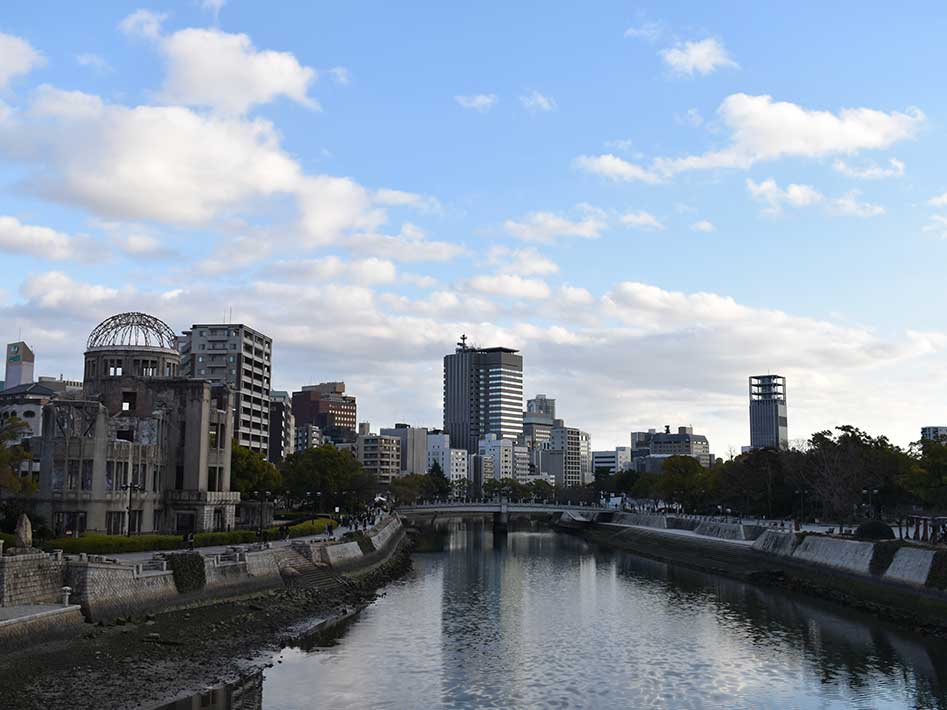
View of the A-dome from Aioi bridge which was the original target for the Atomic bomb due tot he unique ‘T’ shape as seen from the air.
Right next to the Peace memorial is Aioi bridge. It may not draw much interest as tram and cars move back and forth over it modest structure. This bridge was the intended target of the atomic bomb. When seen from the air an adjoining bridge forms a noticeable T shape which was in the cross hairs of the Enola Gay, the B29 bomber who dropped the first atomic bomb. The bomb went slightly off course. Instead, it detonated 160m to the east and as designed, 600m above the land surface. The original bridge in fact survived and was in use for over 40 years before being replaced in the 80’s.
Hiroshima Peace Memorial Museum
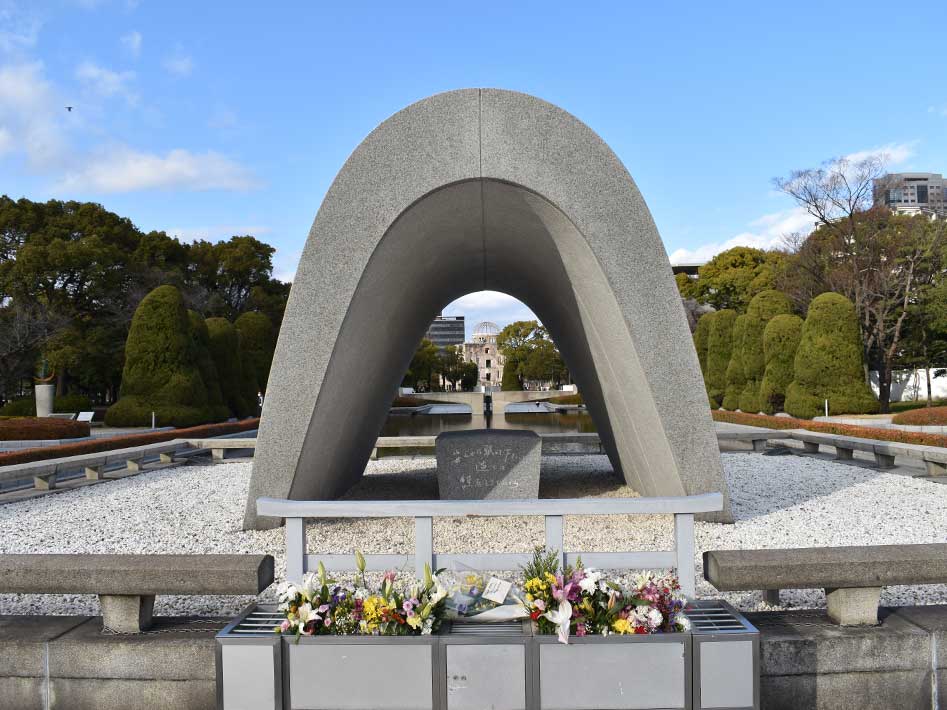
Peace Park which houses the well crafted Hiroshima Peace Memorial Museum
The museum, to the south of the Peace park is an unassuming structure but is rich in information surrounding the lead-up to the bombing, the immediate and ongoing impacts of the blast and the future nuclear arms race, including the attempts to restore peace in the world. It is a pretty confronting, moving and all over interesting place to visit.
Shima Hospital (Hypocentre)
This hospital is now a clinic and is the exact spot where the bomb detonated. Known as the hypocentre, the bomb actually detonated 600m above the surface of the earth and so this spot would have received the largest direct impact of the blast. The position is marked with a small plaque and the Shima Hospital is now a clinic still operating in Hiroshima.
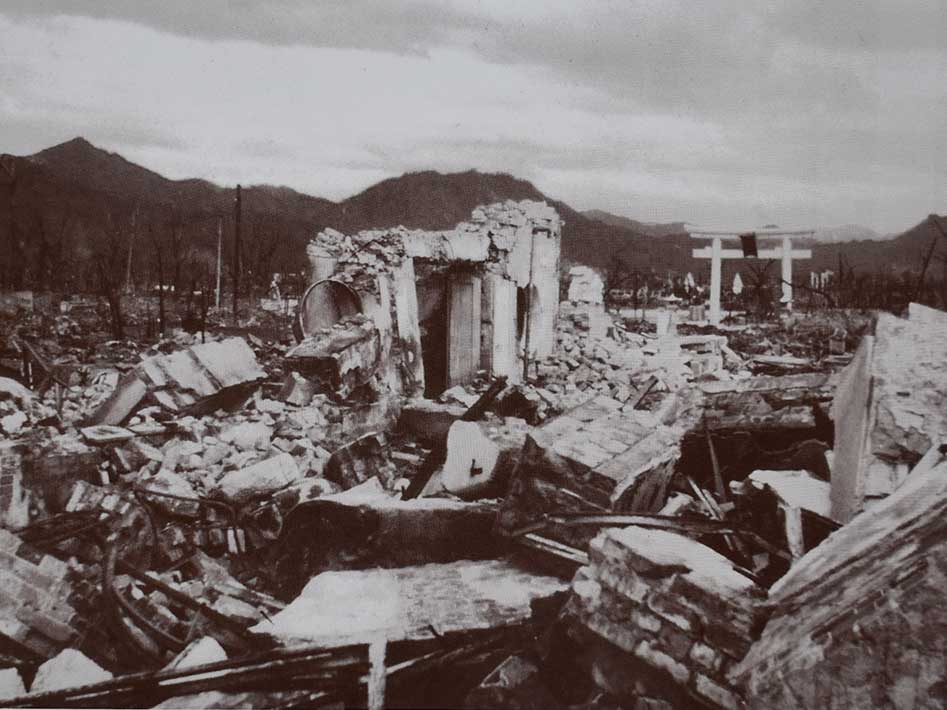
Looking north from the Hypocentre soon after the atomic blast.
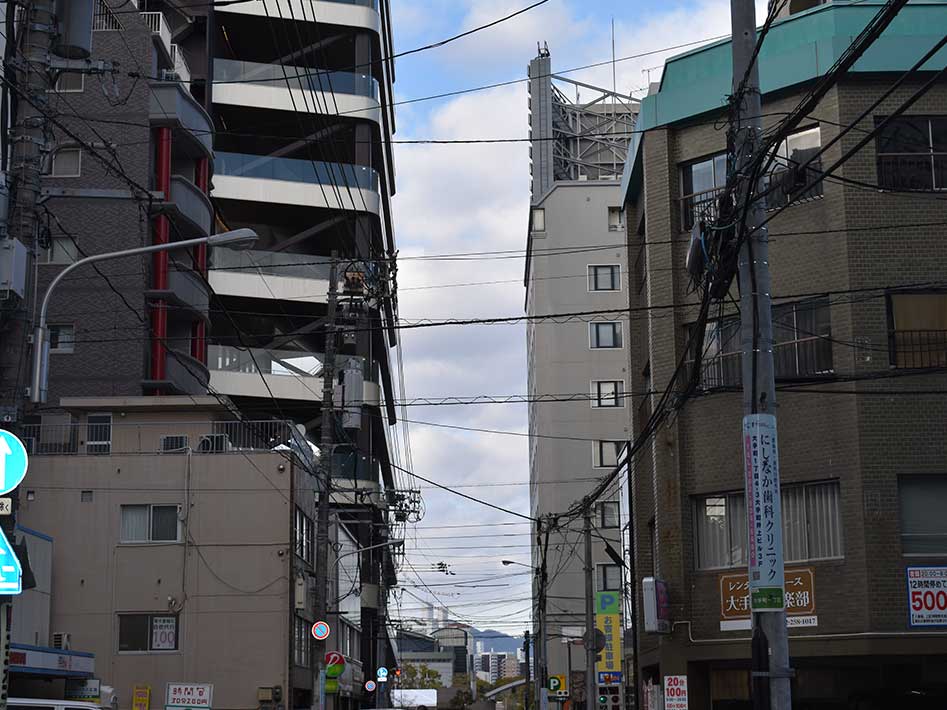
Looking north from the Hypocentre today.
Hiroshima Bank of Japan
The Bank of Hiroshima in 1945 was a new solid reinforced concrete building almost 400m from the hypocentre. The workday had begin at 8:15 on 6 August and the upper floor shutters had been opened for business, whereas the lower floors still had their solid shutters closed.
The upper floors were severely damaged but overall the building withstood the blast. The new 90cm thick vault walls and precautions taken from floods and fire allowed 10 of the 18 staff to survive the immediate blast.
The bank served as a financial hub allowing other banks to use its branch as a trading point. It also had the only reserves of cash in the city as the rest had been incinerated in the blast. In fact, most of the buildings in Hiroshima were made of wood (due to common earthquakes) and paper was common as a traditional interior wall. While the blast flattened all buildings near the hypocentre, the resulting firestorm spread unchecked for over 5 kilometres destroying thousands of homes.
Today it is no longer a bank but remains a museum and is freely accessible to walk through. In particular the large vault is still intact and available to walk through.
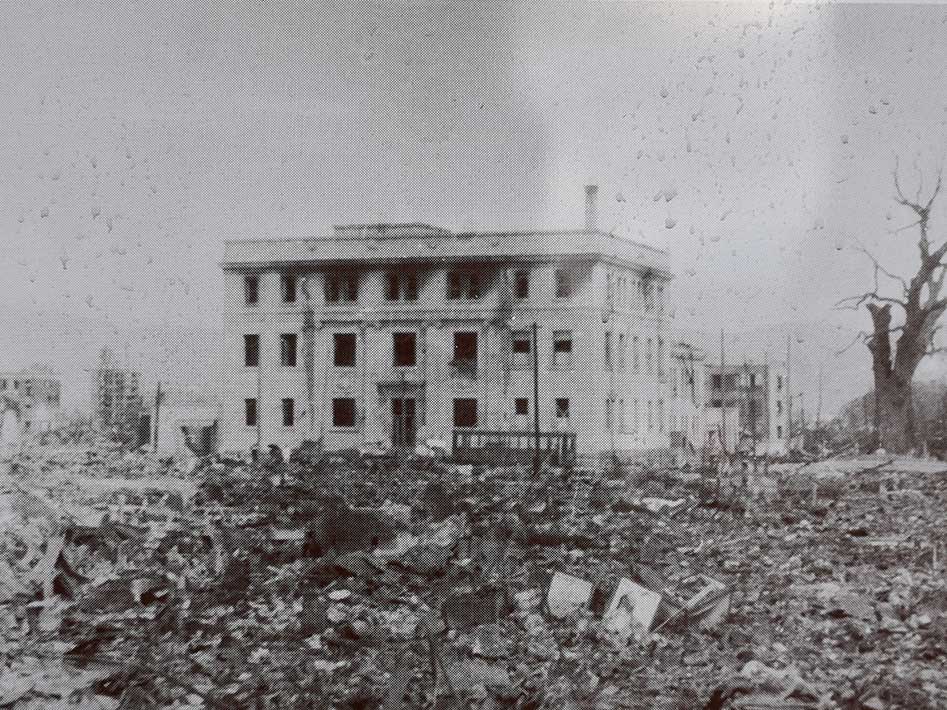
The lone figure of the Hiroshima Bank of japan branch shortly after the blast.
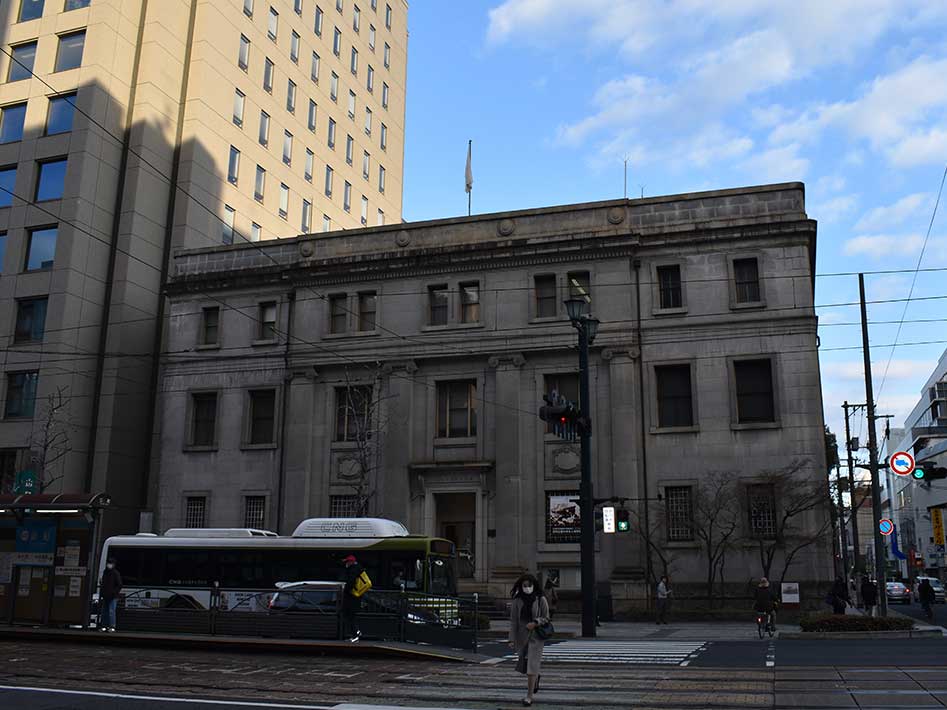
The Hiroshima Bank of Japan branch today. Now home to a small (and free) museum.
Sumitomo Bank Branch
Originally located along the same street, the Sumitomo bank branch once held one of the most iconic images of the blast. The force was so powerful and the heat so extreme (up to 4000 degrees celsius) that ‘shadows’ were cast by objects that shielded surrounding surfaces. Now held in the peace museum, the front facade of the Sumitomo bank branch clearly shows a human shadow cast on the stone steps leading to the entrance.
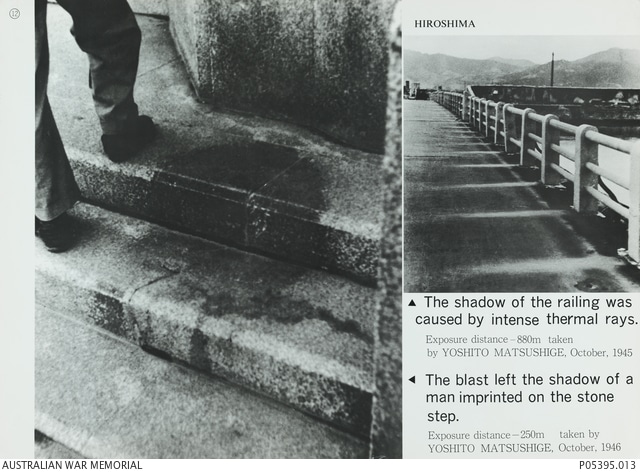
The marking left by an atomic blast. (Courtesy of Wikipedia & Australian War Memorial)
Children’s Peace Monument
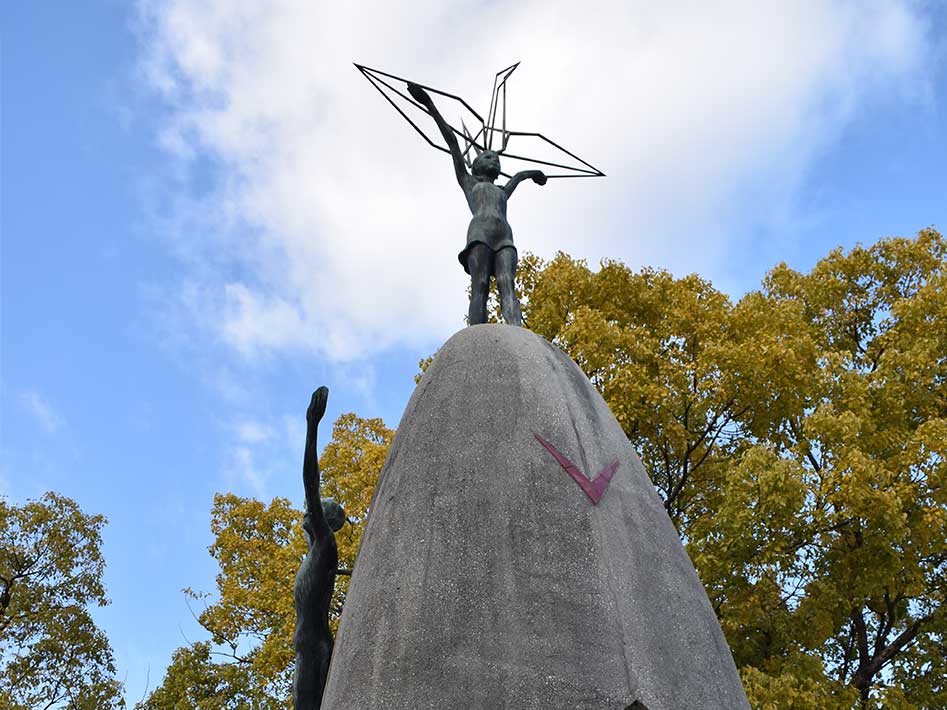
Children’s Peace Memorial displaying Sadako Sasaki who, while dying from Leukemia after radition poisoning from the blast, created a children’s movement to end nuclear war.
Sadako Sasaki I recall reading about in school. She began folding 1000 origami paper cranes, which is a Japanese tradition in order to be granted a wish. She wished, not to personally survive the radiation poisoning that eventually killed her, but instead for world peace and the end of nuclear war. Children fro around the world have continued her tradition of folding paper cranes to keep the tradition alive and continue Sadako’s wish for world peace.
There are many other sights in Hiroshima other than those left by the a-bomb. Restaurants are plentiful, mountains are nearby and getting down to the water in summer are other ways to enjoy this more sleepy region of Japan. Still, there are many more obvious and not so obvious markings and plaques scattered across the town to highlight and remember an event that shook the world.










About The Author
Warren
Ever since venturing out the back gate into the bush as a kid, I've had a curiosity to escape and explore as often as I could. It's fair to say that my curiosity has continued to grow instead of fade as the years go on. It eventually came time to turn a few scribbled notes into some legible stories and travel tips for anyone with a similar curiosity as me.